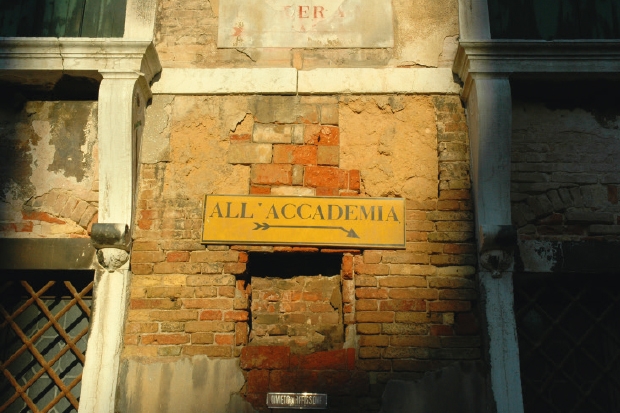The Accademia is one of the smallest of the world’s great art galleries, and picture for picture perhaps the most concentrated collection of masterpieces anywhere — though its rambling layout may surprise first-time visitors. But there are changes afoot as it expands into spaces once occupied by the Venice Fine Arts Academy. This means more works on permanent display and larger special exhibitions.
In the days of the Venetian Republic, the city saw no reason to have a public picture gallery. Paintings were everywhere: in the Doge’s Palace, administrative buildings, churches, chapels, monasteries, convents, hospitals, orphanages, confraternity houses and in hundreds of private palazzi. But after Napoleon’s overthrow of La Serenissima in 1797, civic and religious institutions were forcibly closed and their art works pillaged.
Out of this catastrophe the Accademia emerged. Founded in 1756, with Giambattista Tiepolo as its first president, the Venetian Academy was now to form the basis of a new multi-disciplinary art school with an educational picture gallery attached (access was originally limited to staff and students). Furnished with spoils from the suppressed institutions, it was first opened to the public in 1817. Back then, the location was seen as inconvenient, since this was half a century before the first Accademia Bridge across the Grand Canal (the design of the present wooden one dates to 1933). Even more irksome were the haphazardly amalgamated premises, consisting of the 15th-century Venetian Gothic Carità church, the Palladian Convento dei Canonici Lateranensi and the meeting hall and rooms of the Scuola della Carità, Venice’s oldest lay confraternity, founded in 1260.
Bizarre reconfigurations included the horizontal and vertical divisions of the Carità church to create studios on the ground floor and two exhibition halls on the first. After the gallery and school administrations were separated in 1879, their continued forced cohabitation led to chronic complaints of lack of space. This was at last resolved in 2004 when the Fine Arts Academy moved to the 16th-century Ospedale degli Incurabili, the city’s former hospital for syphilitics, on the Zattere.
Among the Accademia’s most precious treasures are works by Giovanni and Gentile Bellini, Carpaccio, Cima di Conegliano, Sebastiano del Piombo, Titian and Giorgione, from the late 15th and early 16th century. This intense flowering of the Venetian Renaissance is to be the subject of an exhibition, In the Age of Giorgione, at the Royal -Academy in London (12 March–5 June).
To mark 500 years since the death of the founder of the celebrated Aldine Press, the Accademia will host another exhibition on this epoch: Aldo Manuzio and the Renaissance in Venice, (19 March–5 June). Apart from his editions of the Greek and Roman classics, Aldo also published Francesco Colonna’s extraordinary erotic novel Hypnerotomachia Poliphili (‘Poliphilo’s Strife with Love in a Dream’), whose vivid text and beautiful, classically inspired woodcuts provided artists with a compendium of references for architecture, ancient ruins, statues, inscriptions, hieroglyphs, landscapes, gardens, figures and narrative scenes.
Joscelyn Godwin’s brilliant translation of the work is available in a travel-friendly paperback. Aldo — the inventor of the -pocket book — would have approved.






Comments